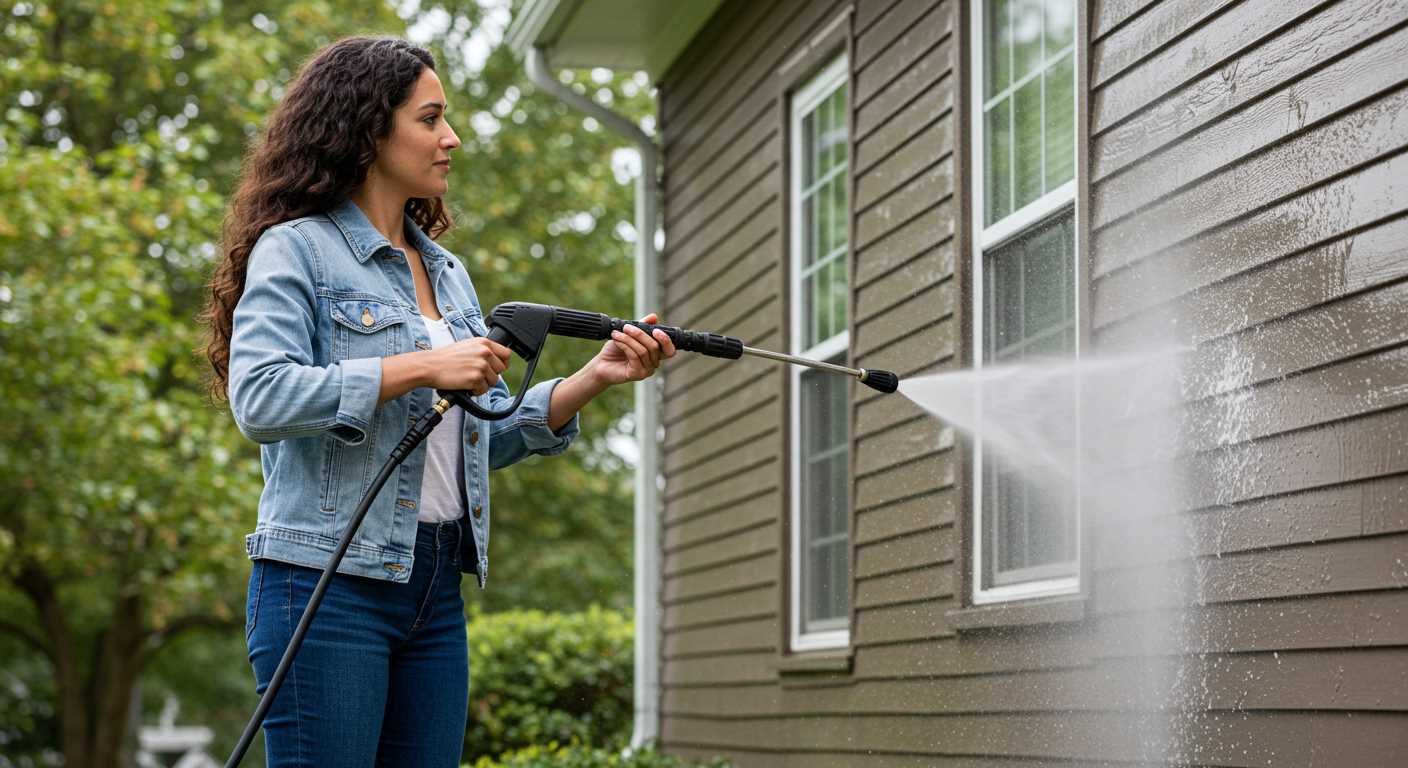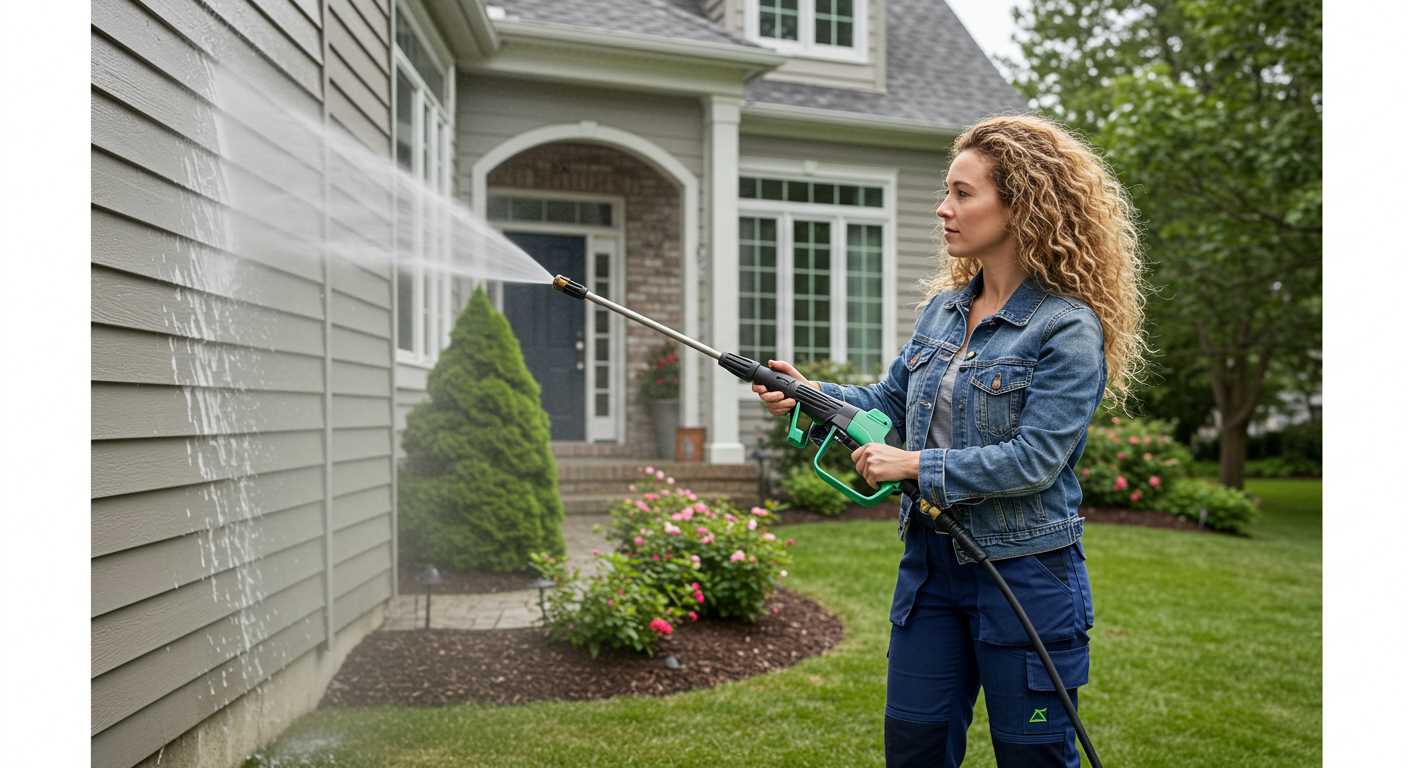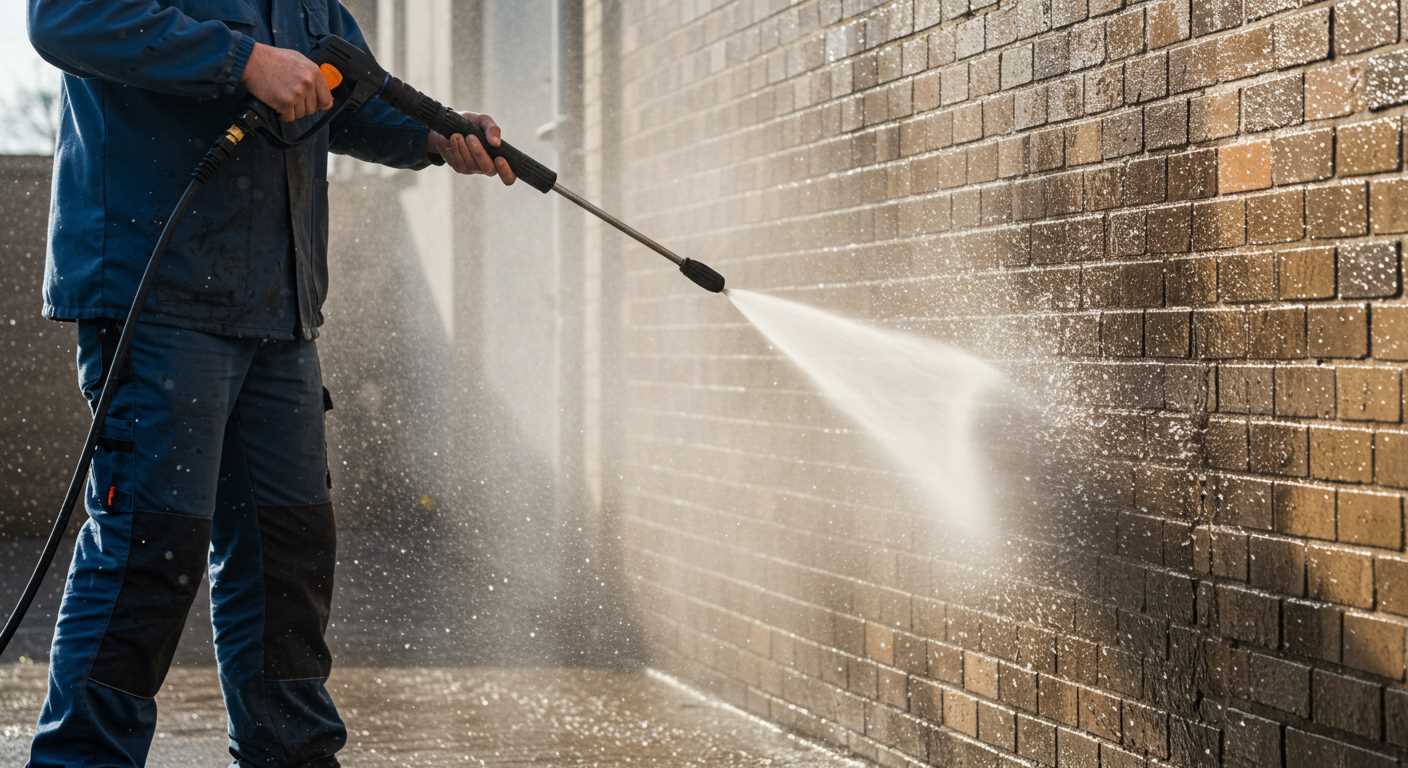



It’s advisable to steer clear of high-pressure equipment for cleaning two-wheeled vehicles. The intense force can force water into sensitive components like electrical systems and bearings, leading to potential damage.
Instead, opt for a gentle method using a soft cloth and mild soap. This approach effectively removes dirt without risking harm to critical areas. Concentrate on areas with stubborn grime using a soft brush, ensuring not to apply excessive force.
When rinsing, maintain a safe distance from the surface. A garden hose with a spray nozzle works well, providing adequate pressure without the risks associated with high-powered machines. Always protect vulnerable parts with plastic covers to ensure they remain shielded from moisture.
The process not only guarantees the longevity of crucial components but also keeps the exterior looking polished and well-maintained. Following these guidelines will ensure that your two-wheeled vehicle stays in excellent condition while enjoying a tidy appearance.
Recommended Practices for Using a High-Pressure Cleaner on Two-Wheeled Vehicles
Avoid direct application of high-pressure streams on sensitive areas such as electrical components, bearings, and seals. Instead, use a wider spray pattern to reduce water force. This approach minimises potential damage while still providing effective cleaning.
Preparation Steps
Before starting the cleaning process, cover vulnerable parts with protective materials. Use plastic bags or specialised coverings for areas like the air intake and electronic systems. Ensuring these components are shielded will prevent water ingress, which could lead to malfunction.
Post-Cleaning Care
After cleaning, inspect thoroughly for any signs of moisture in critical areas. Take extra care to dry off the bike, particularly around the wheel hubs and under the seat. Applying a layer of protective wax or sealant can help in maintaining the finish and warding off corrosion from residual moisture.
Incorporating these tips can help maintain the appearance and functionality of a two-wheeled vehicle while utilising high-pressure equipment safely and effectively.
Understanding the Risks of Using a Pressure Washer
Using high-powered equipment for cleaning requires awareness of potential hazards. The force generated can cause damage in various ways:
- Paint Damage: Directing a strong stream at close range may strip paint or finish from sensitive surfaces. Recommended distance is essential.
- Seals and Gaskets: High pressure can compromise small seals, leading to leaks in critical areas such as brake lines and engines.
- Electrical Components: Moisture ingress can harm electrical systems if water penetrates areas designed to be sealed. Keeping distance from any electronic parts is necessary.
- Fuel System Risks: For machines with exposed fuel systems, water intrusion may lead to poor performance or costly repairs.
- Injury Hazards: Misuse can result in personal injury. The concentrated jet can penetrate skin and cause serious injuries.
To mitigate these risks, consider the following precautions:
- Always maintain a safe distance from the surface being cleaned. Start further away and gradually approach as needed.
- Use appropriate nozzle attachments designed for specific tasks. The wrong nozzle may increase the risk of damage.
- Cover vulnerable areas with protective gear or plastic to shield them from water exposure.
- Read the manufacturer’s guidelines to understand limitations and recommended practices.
- Perform a small test on less visible parts to gauge the appropriate pressure settings before proceeding.
Awareness and preparation are key in preventing unnecessary damage or accidents when using powerful cleaning technology.
Choosing the Right Pressure Washer for Motorcycles
Select a model with a maximum pressure of 1200 to 1900 PSI for safe cleaning. Higher pressure may cause damage to sensitive components.
Opt for units equipped with an adjustable nozzle. This feature provides flexibility, allowing for gentle sprays on delicate areas while still delivering power for tougher grime.
Electric vs. Petrol Models
Electric options are quieter, lighter, and typically easier to use. They’re ideal for home environments. Conversely, petrol-powered machines offer more mobility and higher PSI ratings, suitable for frequent or heavy-duty tasks.
Features to Consider

Look for machines with built-in detergent tanks for simpler cleaning processes. Choose models that are lightweight for ease of handling, ensuring comfortable manoeuvrability.
Inspect the length of the hose and power cord; longer hoses and cords enhance flexibility during use, reducing the need to constantly reposition the unit.
Finally, read user reviews and compare brands to identify reliable options. A solid warranty reflects confidence in the product’s durability, providing peace of mind for future use.
Protecting Sensitive Areas of Your Motorcycle
.jpg)
Before tackling any cleaning task, it’s crucial to safeguard vulnerable components. Focus on the following key areas:
- Electrical Connections: Cover these with plastic bags or tape to prevent moisture ingress, which can cause electrical failures.
- Air Filter: Remove or shield the intake to avoid water damage. This protects against potential engine issues.
- Seals and Gaskets: Inspect rubber seals and gaskets for wear. Water can accelerate deterioration if not properly protected.
- Bearings: Lubricate bearings and apply a protective film to prevent water damage. Avoid direct jet exposure.
- Exhaust System: Block the outlet to stop water from entering the muffler and causing rust or engine performance issues.
Utilise appropriate covers, such as microfibre cloths or waterproof bags, to shield these sensitive areas. Always double-check that everything is secured before proceeding.
Consider employing a gentle spray instead of a harsh jet, especially near critical components. This approach will maintain cleanliness while retaining the operational integrity of your machine.
After cleaning, ensure all covers are removed and components are checked for moisture before operating. This diligence can significantly prolong the lifespan of your vehicle.
Optimal Pressure Settings for Safe Washing
For effective cleaning, maintain a setting between 1200 to 1900 PSI. This range is sufficient to eliminate dirt and grime without risking damage to sensitive components.
A lower setting is advisable for painted surfaces and areas with plastic or electrical parts, while slightly higher pressure may be used on more robust sections, like the engine casing.
Adjusting the nozzle is essential; a wide-angle spray is preferable as it disperses water more gently, further minimising any potential risk. Avoid concentrating pressure on any single spot for extended periods.
Always conduct a test on a small, inconspicuous area prior to full cleaning. This ensures that no adverse effects occur before addressing larger surfaces.
Regularly check maintenance on the equipment to ensure consistent performance within the safe pressure range. This routine can prevent unexpected surges in pressure that might occur due to equipment malfunction.
Recommended Cleaning Products for Motorcycles
For effective maintenance, choose a pH-balanced cleaner specifically formulated for vehicles. These products help remove grime without damaging paint or finishes. Noteworthy options include:
Top Cleaning Solutions

| Product Name | Type | Features |
|---|---|---|
| MotoMatic Cleaner | All-Purpose | Biosafe, non-acidic, safe for all surfaces |
| Cleansing Gel | Gel Formula | Adheres well, ideal for vertical surfaces, streak-free |
| Chain and Brake Cleaner | Specialised | Fast-drying, degreases effectively, leaves no residue |
| Wax & Polish | Finishing Product | Protects paint, enhances shine, repels dirt |
Application Tips
Use a soft microfiber cloth or sponge to apply cleaners, ensuring gentle agitation to lift dirt. Avoid harsh scrubbing to prevent scratches. For hard-to-reach areas, a detailing brush can assist in thorough cleaning. Rinse products completely after use to avoid residue that could attract dirt or damage surfaces.
Conclude with a protective sealant for added defence against environmental elements. Following these guidelines will keep your ride in excellent condition and prolong its lifespan.
Technique: How to Clean Your Motorcycle with a Pressure Washer
First, detach any removable components, such as saddlebags or windscreens. This prevents any damage during the cleaning process and makes it easier to access all parts of the bike.
Next, position the spray nozzle at a safe distance of at least two feet from the surfaces. This distance helps to avoid damaging sensitive areas such as the electrical components, seals, and bearings. A fan nozzle is preferable as it distributes the power evenly across larger areas.
Step-by-Step Process
Begin at the top of the vehicle and work your way down. Start by soaking the entire unit with water to loosen dirt and grime. Pay special attention to the wheels, frame and underside, where debris tends to accumulate. Avoid concentrating the water stream on delicate components.
Employ a specific cleaning solution that’s safe for motorcycles, and apply it with a soft sponge or cloth to stubborn spots. It’s important to follow the guidelines on the product packaging regarding dilution ratios and dwell times.
Rinsing and Drying
Once the bike is lathered with the cleaning agent, use the low-pressure setting to rinse thoroughly, ensuring all soap residues are eliminated. After rinsing, dry the surfaces using a microfibre towel. This not only prevents water spots but also eliminates any remaining grime.
Don’t forget to lubricate moving parts after drying. This step helps maintain the functionality of mechanisms and protects against corrosion.
Aftercare: What to Do After Washing Your Motorcycle

Immediately after cleaning, it’s critical to dry all surfaces thoroughly. Use a soft, absorbent microfiber towel to eliminate any water spots and prevent streaks on your bike’s finish.
Inspect key components for residual moisture, especially in areas like the air intake and electrical connections. A compressed air canister is excellent for blowing out any lingering water in hard-to-reach spots.
Lubricate Moving Parts
Apply lubricant to all pivot points, chains, and cables. This will keep everything operating smoothly and help protect against rust. Use a dedicated motorcycle chain lubricant for optimal performance.
Check Fluid Levels
After cleaning, verify oil and coolant levels. If any fluids appear low or dirty, top them up or change as necessary. This ensures your ride remains in peak condition.
Finally, consider applying a protective wax or sealant. This not only enhances shine but also adds an extra layer of protection against contaminants.
FAQ:
Is it safe to wash a motorcycle with a pressure washer?
Washing a motorcycle with a pressure washer can be risky if not done carefully. High-pressure water can force moisture into sensitive areas like electrical components, bearings, and seals. If you choose to use a pressure washer, keep the nozzle at least two feet away from the bike and avoid directing water at the engine, electrical parts, and other delicate areas. It’s often better to use lower pressure settings and a wide spray pattern to reduce the risk of damage.
What precautions should I take before using a pressure washer on my motorcycle?
Before using a pressure washer on your motorcycle, it’s important to take several precautions. First, ensure the motorcycle is cool to prevent thermal shock on hot components. Remove any fragile accessories, such as mirrors and windshields, if possible. Cover exposed electrical parts and air intakes with plastic bags to prevent water ingress. Additionally, inspect your motorcycle for any loose parts that might be damaged during the wash. Lastly, choose a suitable pressure level, ideally around 1200 to 2000 PSI, to protect your bike’s finish and components.
Can using a pressure washer damage the paintwork on my motorcycle?
Yes, using a pressure washer incorrectly can damage the paintwork on your motorcycle. High-pressure water jets can strip away clear coat and even paint if held too close or used with excessive pressure. To protect the finish, keep the nozzle at a safe distance and use a fan spray setting rather than a concentrated jet. Testing the pressure on a less visible section of the bike can also help ensure that you’re not causing any damage before proceeding with the entire wash.
What techniques can I use to clean my motorcycle effectively without a pressure washer?
If you want to clean your motorcycle without a pressure washer, there are several effective techniques you can use. Start by rinsing the bike with a bucket of warm water to remove loose dirt and grime. Use a mild motorcycle-specific soap and a soft sponge or wash mitt to gently clean the surfaces. For stubborn stains, a soft toothbrush can help reach crevices. After washing, rinse thoroughly with clean water to remove all soap residues. Dry the motorcycle with a soft microfiber cloth to prevent water spots and protect the finish. Regular application of a wax or sealant can also help maintain the bike’s shine.







